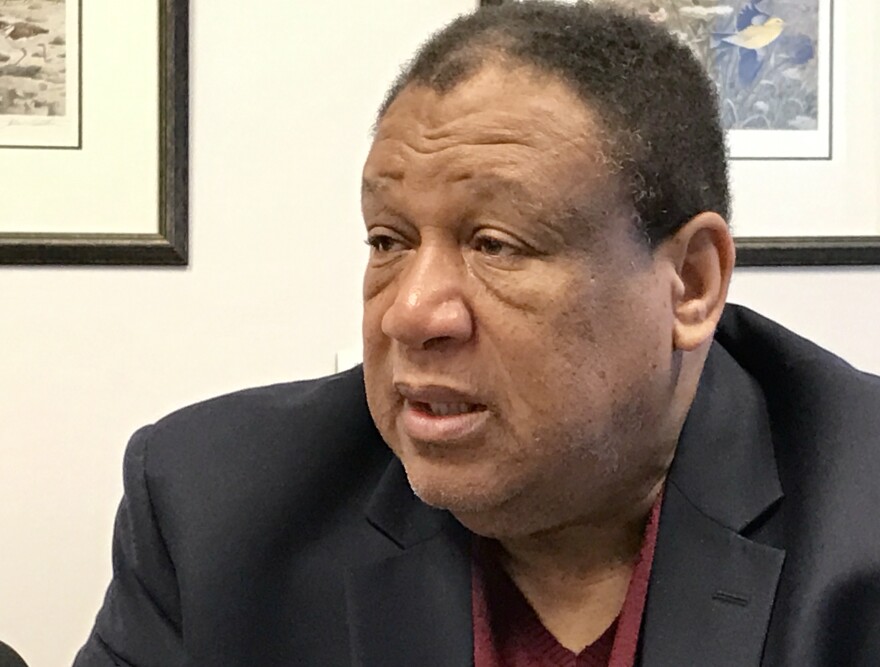More than a quarter of the 51,000 people in Ohio’s prisons are drug offenders, and the state is trying to figure out how to move some of them to treatment at the local level. In this installment of “Opioids: Turning the Tide in the Crisis” WKSU’s M.L. Schultze looks closer at the evolution of the legal system from “lock them up” to “get them help.”
The head of Ohio’s prison system says the state can’t afford to lock up its heroin problem. Director Gary Mohr been pushing for more treatment and transition programs in his prisons, such as the Harmony project at the women’s prison in Marysville.
https://www.youtube.com/watch?v=kakCIZT5qyQ
But he says, overall, prison’s an expensive and counterproductive place to kick a drug habit.
“I don’t know how many articles have been written in the last six years about us sending non-violent low-level people to prison – that I worsen them.”
So Ohio has launched a pilot program to pay counties $23 a person a day to keep low-level offenders back home. That’s about a third the cost of a day in prison, and Mohr says community programs cut the recidivism rate in half. Mohr is also advocating to give judges more latitude in sentencing and expunging records.
“They have the information about an individual. …. They’re looking at the support whether it be employer, family. We’re not looking at that in Columbus.”
Click here for a snapshot of Ohio's prison statistics
It would be hard to find a bigger fan of such approaches than Dr. Odell Owens, former Hamilton County coroner who now runs the nonprofit agency Interact for Health in Cincinnati. But he questions if attempts to treat, rather than incarcerate, people with drug addictions would have gained so much support without one other big change.
“Ninety-seven percent of the heroin overdoses in this area are white. And unfortunately in this country, we still respond to color.”
It’s not just in Cincinnati. A national study in JAMA Psychatry in 2014 found nine in 10 new heroin addicts are white.
And Owens says there’s a huge shift in approach since the days when crack was the dominant drug problem. “You have police agencies saying ‘Hey, you can walk in and bring your heroin and we won’t arrest you. They have never said that for the crack people.”

Owens says, ironically, some historic racial inequities may have made the new heroin crisis a predominantly white issue.
African Americans were less likely to have insurance when insurance routinely paid for opioid pain pills. And Owens says some doctors were more hesitant to prescribe painkillers for African-Americans. So when laws clamped down on the pills, the addicts turning to heroin were most likely white.
But the African-American community has hardly been spared from this drug crisis – and is still living with consequences of the last one— including mandatory minimum sentences.
No discretion for judges
For Shauna Barry Scott, that minimum was 20 years in a federal prison.
“When the war on drugs was launched initially, it was launched against people of color. It was done without regard for families being destroyed. Communities of color were just decimated.”
'It was done without regard for families being destroyed. Communities of color were just decimated.'
She was sentenced back in 2005, for selling about 3 ounces of crack.
Some portrayed her as a significant dealer in Youngstown. Others noted she was a married mother of five, struggling to fund a charity to feed hungry kids.
She acknowledges she made a lousy choice selling the drug that was devastating her community. But if she were convicted today, her sentence would be about five years. That’s largely why President Obama commuted her time in 2015.
Now she’s trying now to set up a program for those returning after long prison stays, “some of the nicest, kindest most precious people I’ve ever met in my life and to think about people like that being buried away in prison, what does that accomplish?”
Lessons learned and a huge death toll
Stark County Judge John Haas says it’s a mistake to read race into the shift in emphasis in the courts toward treatment. The founder of one of the oldest drug courts in the state says the system has simply learned from failures of the war on drugs.
'It was terrible and ravaging, but they weren't dying like they are with heroin.'
“We have everybody and it just is not an issue. It’s looking at a person who’s got a problem, if they have a problem, how can we get them through it?
And court administrator, Dwaine Hemphill, says another reality of the heroin epidemic has made the shift inevitable: The number of people who are dying.
“Crack and meth destroyed humans, their health, their appearance. It was terrible and ravaging, but they weren’t dying like they are with heroin.”
What would Jesus do?
Gary Mohr, the head of Ohio prisons, says it would be a mistake to believe everyone is a convert to a treatment model. He often hears some version of: Why bother? Let the addicts die.

To which Mohr bristles and points to his role model: Luke’s biblical account of Christ on the cross with two criminals beside him.
“The last human being that he talked with was a criminal, who was rightly convicted and he had compassion. I have compassion. And I just don’t subscribe to the belief of ‘those people’ being that different than I.”
And Mohr maintains compassion– regardless of race -- is the only way Ohio will find its way out of this drug crisis and whichever one comes next.










